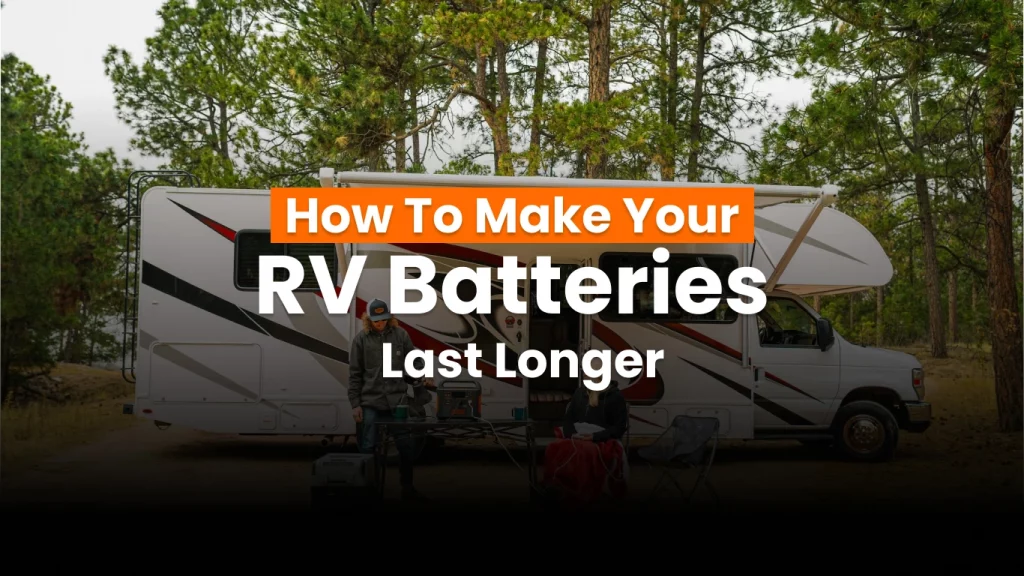Your RV battery system is the heart of any road‑trip or boondocking adventure, and treating it well can save you from unexpected power losses and expensive replacements down the road. Understanding the reasons behind early battery failure and adopting smart maintenance habits can dramatically increase your battery’s service life.
What causes RV batteries to fail prematurely?
Two major culprits usually shorten battery life:
- Sulfation – When a lead‑acid battery remains at low charge for too long, lead‑sulfate crystals begin to form on the plates. Eventually, these crystals harden and reduce the battery’s capacity, this is the primary cause of early failure without proper charging.
- Parasitic loads – Even when your RV is off, devices like LP gas sensors, stereo clocks, antenna boosters, or LED lights can suck small amounts of current. Over weeks or months in storage, this steady drain can weaken your battery or leave it entirely discharged.
Understanding different RV battery types
Not all RV batteries are created equal, here’s a quick guide to the main types and how they differ in maintenance and lifespan:
- Flooded lead‑acid (wet‑cell): Traditional and cost‑effective, but high maintenance. They need monthly water top‑offs and ventilation because they off‑gas during charging. Lifespan is roughly 3–6 years with careful care.
- AGM (Absorbent Glass Mat): Sealed and maintenance‑free, AGM batteries are spill‑proof and cleaner, but don’t last as long as lithium. Expect about 4–7 years.
- LiFePO₄ lithium‑ion: The most modern option. They’re lightweight, charge rapidly, tolerate deeper discharge (up to ~80–90% DoD), and can provide 2,000–4,000 cycles, translating to 8–15 years of service life. Minimal maintenance required.
A checklist for extending battery lifespan
Consistent care is the key. Follow this routine checklist to keep your batteries in top shape:
1. clean and inspect terminals
Corrosion can block electrical flow and increase resistance. For flooded or AGM batteries, use a wire brush with a baking soda and water solution. Rinse and dry completely. Lithium batteries rarely corrode, but if you notice buildup, gently clean with a dry cloth or lightly moistened with rubbing alcohol. Always disconnect negative first and wear protective gloves and eyewear.
2. monitor voltage regularly
Use a multimeter every 1–2 months:
- Lead‑acid: full charge should read 13.6–14.4 V
- LiFePO₄: full charge typically 13.33–13.6 V
Readings below those ranges indicate partial discharge or charging system issues.
3. recharge before deep discharge
Avoid letting the battery fall below 50 % SOC for lead‑acid types, and certainly not below 20 % if it’s flooded. Lithium batteries tolerate deeper discharge but still benefit from periodic charging. Deep discharge shortens lifespan dramatically.
4. manage parasitic drains
Use the battery disconnect switch to isolate the battery during long storage periods. If your RV converter or solar maintainer doesn’t have smart charging, it may be safer to disconnect it even when plugged into shore power.
5. top off fluid levels in flooded batteries
Every month or two, check the electrolyte level. Add distilled water so it remains just below the vent well. Never overfill; that prevents overflow during charging. AGM and lithium batteries are sealed and don’t require water.
6. store batteries properly during seasons
If you won’t use the RV for a while, disconnect and remove the batteries. Store them in a cool, dry place:
- Lead‑acid: 50–80 °F (10–27 °C)
- LiFePO₄: up to 95 °F (10–35 °C), stored at around 50 % SOC and checked every three months
Even when stored, topping up charge periodically prevents self‑discharge damage.
7. equalize flooded batteries regularly
Equalization balances the cells by overcharging slightly to uniform voltage levels, reducing sulfation. Do this every 30–90 days with a charger that supports equalization. Don’t perform on sealed AGM or lithium types.
8. use smart chargers and desulfators
Smart chargers automatically adjust voltage through bulk, absorption, and float stages. Desulfators can help dissolve hardened sulfate crystals in older lead‑acid batteries, restoring some capacity.
When is it time to replace your battery?
Even with perfect upkeep, batteries wear out. Here’s how to know it’s time:
- Shortened runtime: If a full charge lasts much less time than when new, especially in lead‑acid batteries that typically last 2–4 years. Lithium can last a decade or more.
- Visible damage: Bulging, cracking, or electrolyte leaks are dangerous signs. Replace immediately.
- Trouble holding charge: If voltage drops quickly after charging or stays low despite charging, internal degradation is likely.
- Persistent corrosion: If terminals corrode soon after cleaning, it may indicate internal electrolyte leakage or structural failure.
Why consider LiFePO₄ lithium batteries?
If you’re ready to upgrade, lithium offers significant advantages:
- Up to 10–15 years of useful life and thousands of charge cycles
- Lightweight, reducing your RV’s overall mass and improving fuel efficiency
- High charge/discharge efficiency and faster recharge times
- No water maintenance or off‑gassing
- More usable capacity from deep discharge (typically up to ~90 % DoD)
Despite higher upfront cost, lithium delivers better long‑term value, especially if you’re serious about RV living.
Final thoughts
Your RV’s house battery is more than just a power source, it’s your freedom to go off‑grid, stay comfortable, and explore with confidence. By understanding how and why batteries fail, adopting routine maintenance habits, and choosing the right battery type for your needs, you can significantly extend performance and avoid the frustration of unexpected failures.
Whether you continue with a well‑cared‑for lead‑acid setup or make the switch to a lithium upgrade, following this guide will keep your RV powered, reliable, and ready for adventure.




